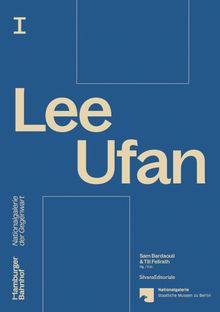ARTIST MONOGRAPHS
|
|
STATUS: Out of stock Temporarily out of stock pending additional inventory. |
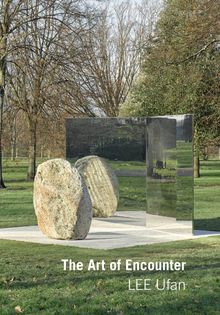 Lee Ufan: Art of Encounter
Lee Ufan: Art of Encounter
Published by Lisson Gallery.
Interview by Hans Ulrich Obrist.
Painter, sculptor, writer and philosopher Lee Ufan (born 1936) first came to prominence in the late 1960s as one of the major proponents of the Japanese avant-garde group Mono-ha. Japan's first contemporary art movement to gain international recognition, the Mono-ha school of thought rejected Western notions of representation, choosing to focus on the relationships of materials and perceptions rather than on expression or intervention.
A new edition of a collection of writings first published in 2004, this volume features previously unpublished essays from 1967 to 2007 and a recent interview with Hans Ulrich Obrist. This edition has been published by Lisson Gallery and the Serpentine Galleries on the occasion of Lee Ufan’s 2018 outdoor commission Relatum-Stage at Serpentine Galleries, London.
PUBLISHER
Lisson Gallery
BOOK FORMAT
Paperback, 5.5 x 8.25 in. / 304 pgs / 8 color.
PUBLISHING STATUS
Pub Date 2/19/2019
Active
DISTRIBUTION
D.A.P. Exclusive
Catalog: SPRING 2019 p. 121
PRODUCT DETAILS
ISBN 9780947830656 TRADE
List Price: $20.00 CAD $29.95 GBP £16.00
AVAILABILITY
In stock
in stock $20.00 Free Shipping UPS GROUND IN THE CONTINENTAL U.S. |
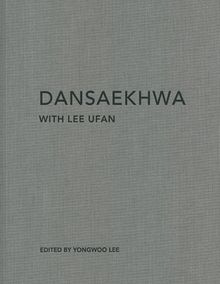 Dansaekhwa with Lee Ufan
Dansaekhwa with Lee Ufan
Published by Kukje Gallery.
Edited by Yongwoo Lee. Introduction by Lee Ufan. Foreword by Hyunsook Lee.
PUBLISHER
Kukje Gallery
BOOK FORMAT
Hardcover, 9.75 x 12.25 in. / 82 pgs / 16 color / 13 bw.
PUBLISHING STATUS
Pub Date 7/26/2016
Out of stock indefinitely
DISTRIBUTION
D.A.P. Exclusive
Catalog: FALL 2016 p. 159
PRODUCT DETAILS
ISBN 9788992233774 FLAT40
List Price: $30.00 CAD $40.00 GBP £27.00
AVAILABILITY
Not available
STATUS: Out of stock indefinitely. |
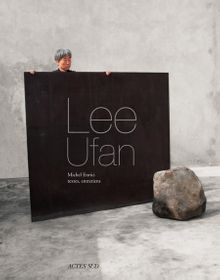 Lee Ufan
Lee Ufan
Published by Actes Sud.
Text by Philippe Dagen, Michel Enrici, Ukaï Satoshi.
PUBLISHER
Actes Sud
BOOK FORMAT
Hardcover, 8.75 x 11 in. / 288 pgs / 200 color.
PUBLISHING STATUS
Pub Date 9/30/2013
Out of print
DISTRIBUTION
D.A.P. Exclusive
Catalog: FALL 2013 p. 138
PRODUCT DETAILS
ISBN 9782330019099 TRADE
List Price: $70.00 CAD $92.50 GBP £60.00
AVAILABILITY
Not available
STATUS: Out of print | 00/00/00 For assistance locating a copy, please see our list of recommended out of print specialists |
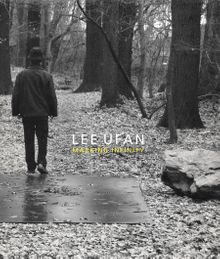 Lee Ufan: Marking Infinity
Lee Ufan: Marking Infinity
Published by Guggenheim Museum Publications.
Text by Alexandra Munroe, Tatehata Akira, Mika Yoshitake, Nancy Lim, Reiko Tomii.
PUBLISHER
Guggenheim Museum Publications
BOOK FORMAT
Hardcover, 10 x 11.75 in. / 200 pgs / illustrated throughout.
PUBLISHING STATUS
Pub Date 2/29/2012
Out of print
DISTRIBUTION
D.A.P. Exclusive
Catalog: FALL 2012 p. 120
PRODUCT DETAILS
ISBN 9780892074181 TRADE
List Price: $65.00 CAD $75.00
AVAILABILITY
Not available
STATUS: Out of print | 00/00/00 For assistance locating a copy, please see our list of recommended out of print specialists |
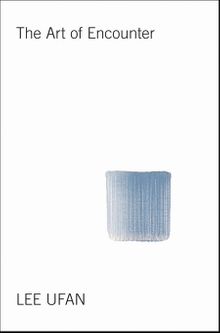 Lee Ufan: The Art of Encounter
Lee Ufan: The Art of Encounter
Published by Walther König, Köln.
Introduction by Jean Fisher.
PUBLISHER
Walther König, Köln
BOOK FORMAT
Paperback, 5.50 x 8.25 in. / 264 pgs.
PUBLISHING STATUS
Pub Date 7/1/2008
Out of print
DISTRIBUTION
D.A.P. Exclusive
Catalog: FALL 2008 p. 156
PRODUCT DETAILS
ISBN 9783865604491 FLAT40
List Price: $49.95 CAD $60.00
AVAILABILITY
Not available
STATUS: Out of print | 00/00/00 For assistance locating a copy, please see our list of recommended out of print specialists |
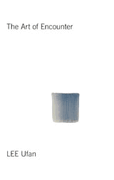 Lee Ufan: The Art Of Encounter
Lee Ufan: The Art Of Encounter
Published by Turner/Lisson Gallery.
Artwork by Lee Ufan.
PUBLISHER
Turner/Lisson Gallery
BOOK FORMAT
Paperback, 5.25 x 8.25 in. / 256 pgs / .
PUBLISHING STATUS
Pub Date 8/2/2004
Out of print
DISTRIBUTION
D.A.P. Exclusive
Catalog: FALL 2004
PRODUCT DETAILS
ISBN 9780947830311 TRADE
List Price: $19.95 CAD $25.00
AVAILABILITY
Not available
STATUS: Out of print | 00/00/00 For assistance locating a copy, please see our list of recommended out of print specialists |

